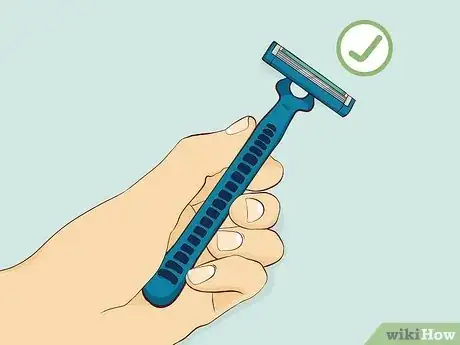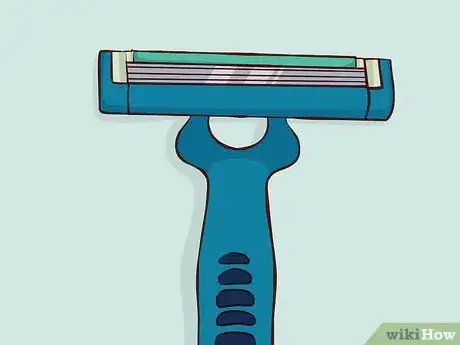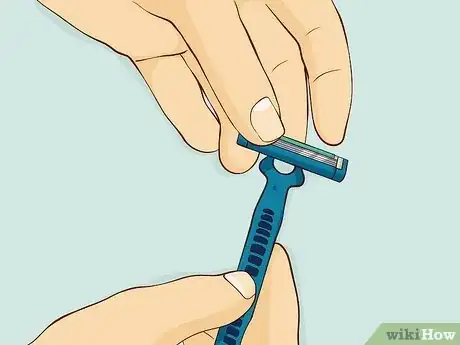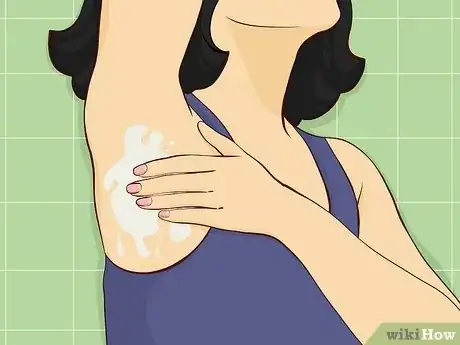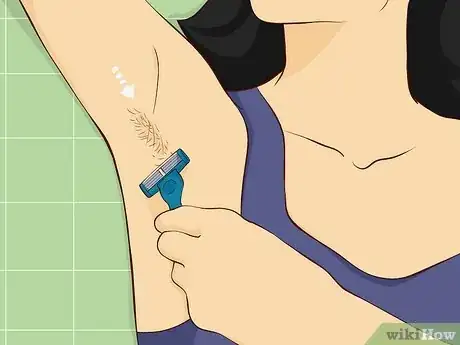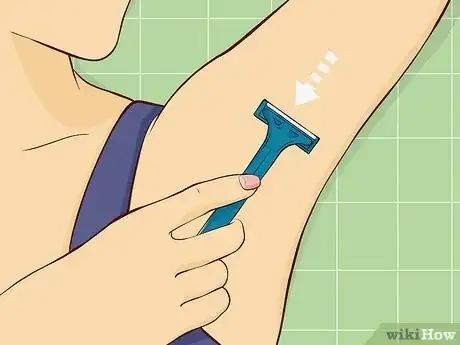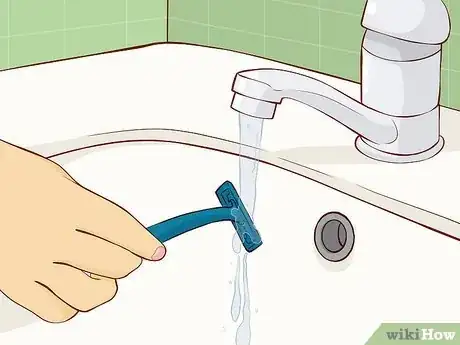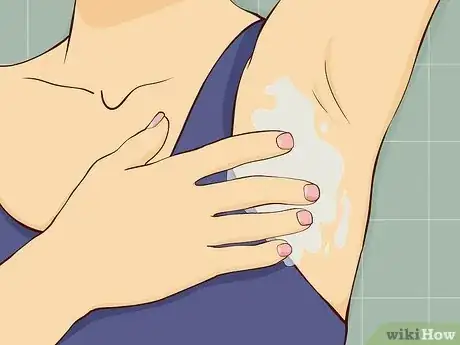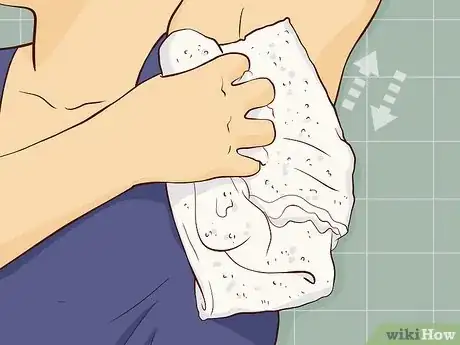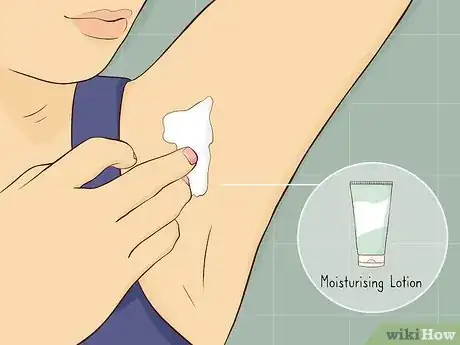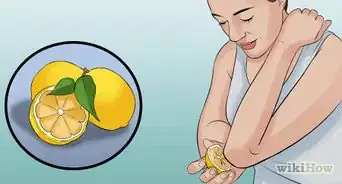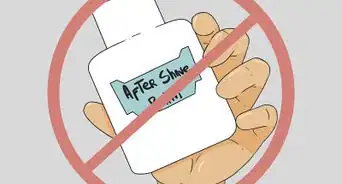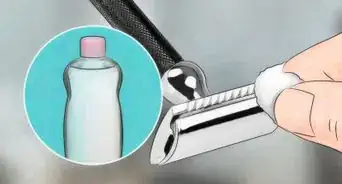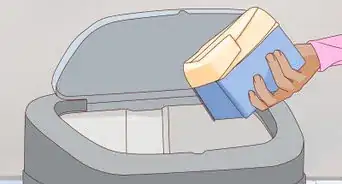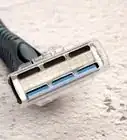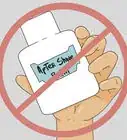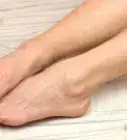This article was co-authored by wikiHow Staff. Our trained team of editors and researchers validate articles for accuracy and comprehensiveness. wikiHow's Content Management Team carefully monitors the work from our editorial staff to ensure that each article is backed by trusted research and meets our high quality standards.
There are 10 references cited in this article, which can be found at the bottom of the page.
This article has been viewed 186,164 times.
Learn more...
Shaving is a routine activity for many people. Sometimes you don’t have time to grab the shaving cream and lather up. Shaving with just a razor and water is a simple, quick, and effective way to remove hair and be on your way. Once you see how convenient it is to shave with only a razor and water, you won't want to shave any other way!
Steps
Preparing to Shave
-
1Choose a razor. You want a razor that’s comfortable to hold and sharp. There are several different types of razors to choose from.
- The straight razor is the sharpest option and usually takes the most time and skill. This razor might not be the best option for shaving with water unless you’ve been using it for a while.
- The safety razor (or a double-edged razor) is another option if you want a close shave. It’s also usually used with shaving products, but you can use it with water if you know how to use it.[1]
- Disposable razors are probably the best option for shaving with water. They’re easy to clean, and you can dispose of the blades (or entire razor) after a few uses.
- Electric razors can easily be used on dry or watered skin. The trade-off is that you won’t get as close of a shave as you would with any of the other options.
-
2Make sure your razor is clean and free of hair. If it’s not, unclog the blades by giving it a quick rinse under a running faucet, or wipe it down with a cloth or small brush.Advertisement
-
3Make sure your blade is sharp. If you aren’t sure if your blade is sharp enough, you can test it with a few methods.
- Wet your thumbnail and drag it across the edge of the razor, without applying pressure. You should be able to tell how sharp it is by feel. This test isn’t as reliable as some others, but it’s quick.[2]
- You can also drag the pad of your thumb across the edge of the blade to test its sharpness. If it’s sharp, you’ll feel a sticking sensation. Be careful not to apply too much pressure or you’ll cut yourself.[3]
- Shave a section of your hair to see how many strokes it takes to get a clean shave. It shouldn't take many (1 or 2).[4]
-
4Clean your environment. You’re dealing with open pores that are vulnerable to bacteria.[5] A clean environment will help avoid bacteria getting into your pores.
-
5Exfoliate your skin. If you want an especially close shave, exfoliate your skin before shaving. It scrubs off dead skin that clogs your pores and exposes your hair follicles.[6]
Shaving
-
1Wet your skin with warm water. Cover the whole area you’re shaving. The warm water will help open up your pores, making it easier to pull the hairs out of their follicles when you shave.[7]
- You can also place a warm cloth on your skin for a few minutes.
- Another option is to shave in the shower with the water falling onto your skin.
-
2Press the razor firmly against your skin. Don’t press hard enough to draw blood, but give enough pressure to remove the hair at the follicle.
- Angle your razor so that the blade is not placed at a 90-degree angle to your skin. Something closer to a 45-degree angle is what you’re aiming for.
-
3Make short, smooth strokes. Shave in the direction your hair grows. This will cut down on ingrown hairs and rashes, and help provide a more precise shave. So, if your hairs grow toward the floor, pull your razor downward, toward the floor.[8] [9]
- First shave the sections that don’t have any tricky corners or crevices.
- Shave the tricky spots last. For these areas, you might need to stretch the skin with your fingertips.
- You don’t have shaving cream to show you where you’ve shaved, so pay close attention. You might have to go over some spots twice.
-
4Rinse your razor between strokes. Lift the razor from your skin between strokes and rinse it under running water to unclog the hairs from the blades.[10]
- There’s no shaving cream to show whether the blades are clean, so pay careful attention.
Caring for your Shave
-
1Splash the area with cold water. This helps remove loose hair and closes up your pores, preventing bacteria from getting in.
-
2Dry your skin. Use a clean cloth or paper towel and dab the extra water from your skin.
-
3Apply lotion or aftershave. If you have sensitive skin, you can apply lotion, aloe, or an aftershave gel to your shave to moisturize your skin.
- Some aftershaves include antibacterial properties, which help keep your shaved area healthy.[11]
Community Q&A
-
QuestionWhy would anyone want to shave without shaving cream or some type of lubricant? I don't see the advantage.
 Community AnswerSome people finds it provides a smoother shave, but this advice is also useful if you know you'll have to shave in a situation where supplies will not be available.
Community AnswerSome people finds it provides a smoother shave, but this advice is also useful if you know you'll have to shave in a situation where supplies will not be available. -
QuestionAre there any bad effects of shaving without cream?
 Community AnswerIf you're not careful and super-gentle, you could end up with some skin irritation.
Community AnswerIf you're not careful and super-gentle, you could end up with some skin irritation. -
QuestionCan I shave my pubic area only with water and razor?
 Community AnswerYes, but prepare for serious razor burn and ingrown hairs, possibly nicks too. If you don't have a shaving cream, at least use baby oil or conditioner.
Community AnswerYes, but prepare for serious razor burn and ingrown hairs, possibly nicks too. If you don't have a shaving cream, at least use baby oil or conditioner.
Warnings
- You might cut yourself.⧼thumbs_response⧽
- You may get razor burn.⧼thumbs_response⧽
Things You'll Need
- Sharp razor
- Cold and hot water
- Washcloth
References
- ↑ https://en.wikipedia.org/wiki/Safety_razor#Disposable_razors
- ↑ http://wiki.badgerandblade.com/Honing
- ↑ http://wiki.badgerandblade.com/Honing
- ↑ http://wiki.badgerandblade.com/Honing
- ↑ http://articles.chicagotribune.com/1985-07-21/features/8502170489_1_shave-pfb-hair
- ↑ http://www.askmen.com/fashion/fashiontip_200/248_fashion_advice.html
- ↑ http://kidshealth.org/en/teens/shaving.html#
- ↑ http://youngmenshealthsite.org/guides/shaving/
- ↑ http://www.askmen.com/grooming/appearance/11_timeless-shaving-dos-donts.html
- ↑ http://youngmenshealthsite.org/guides/shaving/
- ↑ http://www.healthguidance.org/entry/12715/1/Importance-of-Applying-an-Aftershave.html
- ↑ https://www.aad.org/public/skin-hair-nails/skin-care/how-to-shave
- ↑ http://youngmenshealthsite.org/guides/shaving/
- ↑ http://www.dermalinstitute.com/us/library/50_article_Save_the_Shave_.html
